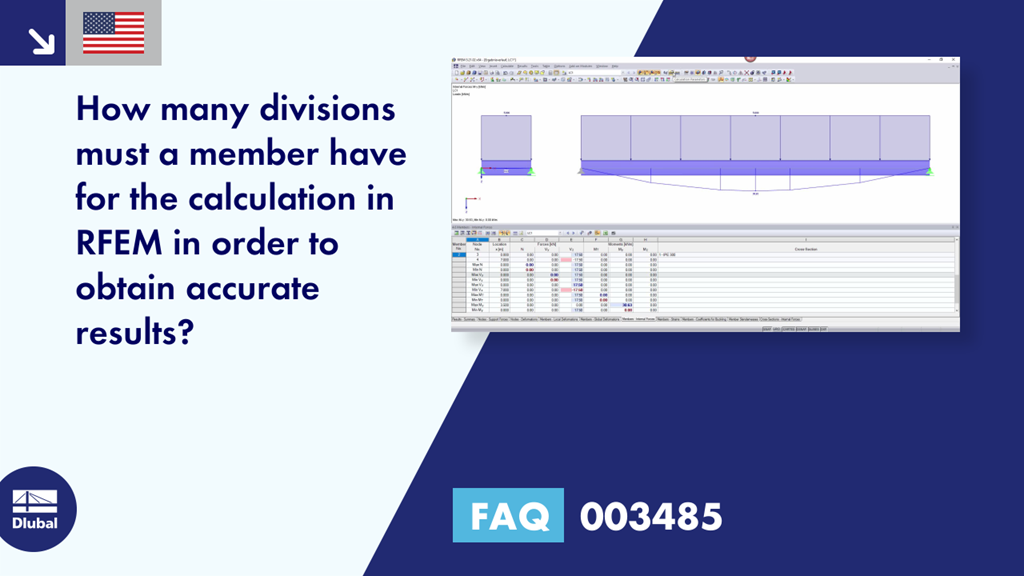Question:
How many divisions must a member have for the calculation in RFEM in order to obtain accurate results?
Answer:
It is not possible to give a general answer to this question, as it depends on the structural system. There are several divisions to be considered in RFEM.
1. Member divisions for result tables
The member divisions for result values can be created via "Insert" → "Model Data" → "Member Divisions". This division ensures that the internal forces of members can also be displayed at intermediate points in the RFEM results tables, for example. The graphical result display remains unchanged.
2. Member divisions
The divisions for the graphical result diagram and the determination of the extreme value can be displayed and controlled in the FE mesh settings (see Image 01).
For cable, foundation, and tapered members or members with plastic properties, you can specify the number of internal divisions. They lead to a real division of the member by intermediate nodes. However, if a member is arranged on the boundary line of a surface or if the definition line has an FE mesh refinement, the specification has no effect.
The option to activate member divisions for large deformation or post-critical analysis allows you also to divide beams for the calculation according to the large deformation analysis by intermediate nodes, so that these members are calculated with higher accuracy. The number of member divisions is taken from the text box above.
When using the division even for straight members, which are not integrated into surfaces, FE nodes are generated on all free members and considered for calculations according to the linear static and the second-order analysis. The FE length is either determined by the global target length lFE in the General section of the dialog box, or entered manually.
With the Use division for members with nodes lying on them option, RFEM creates FE nodes on the locations of the member where end nodes of other members are located, without any connection occurring between these members.
